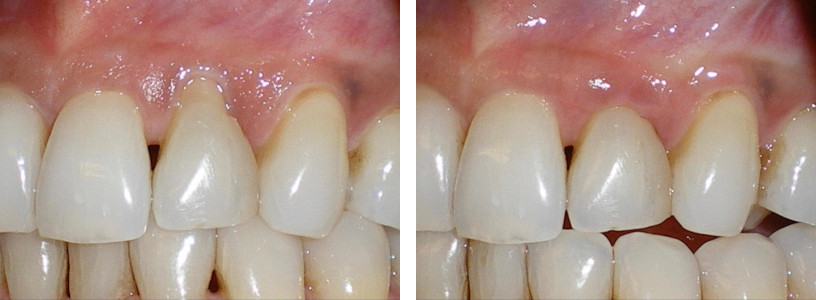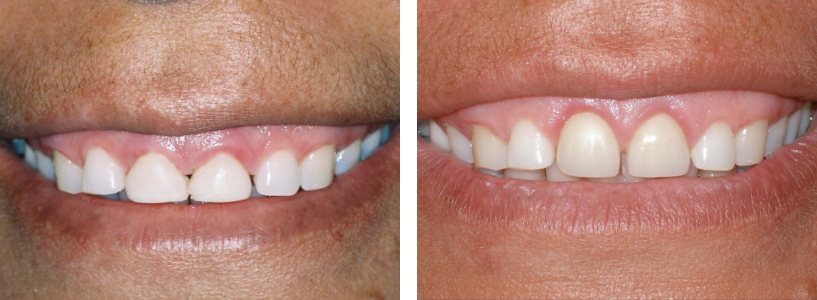 There are several conditions of the gums (gingiva) that may require surgical treatment in spite of your attentive care and hygiene. Chronic bacterial infection in the gums, called periodontal disease, is common in adults but rare in younger children. In early stages of the disease, the gums are red and bleed easily. In later stages, gums recede and the teeth may emit a foul odor or become loose. Although antibiotics, hygiene aids and surgical procedures can help prevent and control periodontal disease, extraction is the only appropriate treatment for severely diseased teeth.
There are several conditions of the gums (gingiva) that may require surgical treatment in spite of your attentive care and hygiene. Chronic bacterial infection in the gums, called periodontal disease, is common in adults but rare in younger children. In early stages of the disease, the gums are red and bleed easily. In later stages, gums recede and the teeth may emit a foul odor or become loose. Although antibiotics, hygiene aids and surgical procedures can help prevent and control periodontal disease, extraction is the only appropriate treatment for severely diseased teeth.
It may seem like a good idea to keep your natural teeth until they are painful, loose, or obviously hopeless. But such a delay in extraction results in more severe bone loss in the jaw, and may make it difficult to achieve dental implant success because more extensive bone graft reconstruction is needed. Dr. Stout is the best dental implant surgeon to help you make key decisions about keeping versus extracting diseased teeth.
Learn more about dental implants
Gum recession progresses slowly as we age. It can accelerate greatly if the gum tissues are thin and fragile or if there is over-aggressive brushing. Exposed roots may be quite sensitive and may pose cosmetic problems when the front teeth are involved. Areas of gum recession can often be repaired with gingival grafting. We harvest a section of healthy gingiva from your palate and graft it over the exposed root. This prevents future recession, restores the contours of your gum line, and leaves you with a more attractive smile.

Another type of gum tissue surgery called crown-lengthening is sometimes needed. If a tooth is decayed or broken below the gum line, too little of the tooth is exposed to adequately prepare the tooth for restoration. In the crown lengthening procedure, we adjust the gum and bone level to expose more of the tooth and allow a more sturdy and long-lasting restoration.
Crown-lengthening is sometimes performed strictly to improve the appearance of your smile. When teeth are the proper size, they appear too short because they are covered by too much gum tissue. To correct the resulting “gummy” appearance of the teeth, crown-lengthening can set the gum contours and shape at a more natural, symmetrical, and attractive level.
